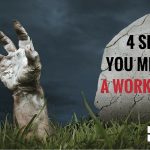How to Motivate Your Team Using DiSC Types
Everyone agrees that people long to be inspired and motivated. Yet in a recent study of 13,000 leaders, less than 13% of leaders rated themselves as either dynamic, stimulating or magnetic¹—qualities necessary to inspire action from others. If you suspect that your team is craving more motivation and inspiration, try this fabulous short-cut and motivate according to their DiSC personality types.
¹Source: The Work of Leaders (by Julie Straw (Author), Barry Davis (Author), Mark Scullard, Susie Kukkonen, Bernard W. Franklin, 2013)
| Behavior you see | Motivated by | Try this approach |
|---|---|---|
| D – Dominant, direct- communicator, fast talker, fast moving, impatient, has cool affect, and is sometimes a little cynical. | Results, power, responsibility, transparency. | Get to the point—fast. Make it a contest or a competition. Give genuine compliments on past results. Ask for help but don’t appear weak or meek. |
| I – Interactive, friendly, warm, talkative, multi-tasker, is a highly engaged communicator, and is sometimes overly “brain-stormy.” | A warm bond with others, excitement, upbeat atmosphere. | Ask for their best ideas. Make it a party or a fun event. Offer kudos and ask for ideas and input. If there is bad news—rephrase it. |
| S – Subtle warmth and quiet kindness. Follows through, is systems-oriented and gives thoughtful responses to questions. Is sometimes wishy-washy on decisions. | True teamwork, stability of environment, collaboration. | Keep things friendly but only if it’s authentic. Ask for input and concerns and wait patiently for answers. Emphasize follow-through, not change. |
| C – Highly attentive to detail. Asks lots of questions and sometimes raises doubts instead of solutions. | Quest for perfection, mental challenge, calm. | Be yourself. Ask for help fixing a problem. Anticipate tough questions in advance and illustrate why you are stuck. Set a follow-up meeting. |
DiSC Tests for Your Team: http://www.everythingdisc.com/managementmomentum
![]()
Try to listen for communication cues in the next three or four conversations you have at work to see what you can notice and learn about the styles and preferences of other people.
Recent Posts





